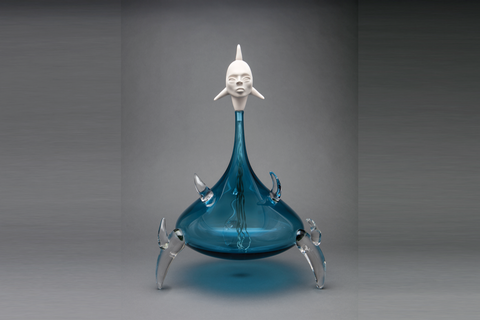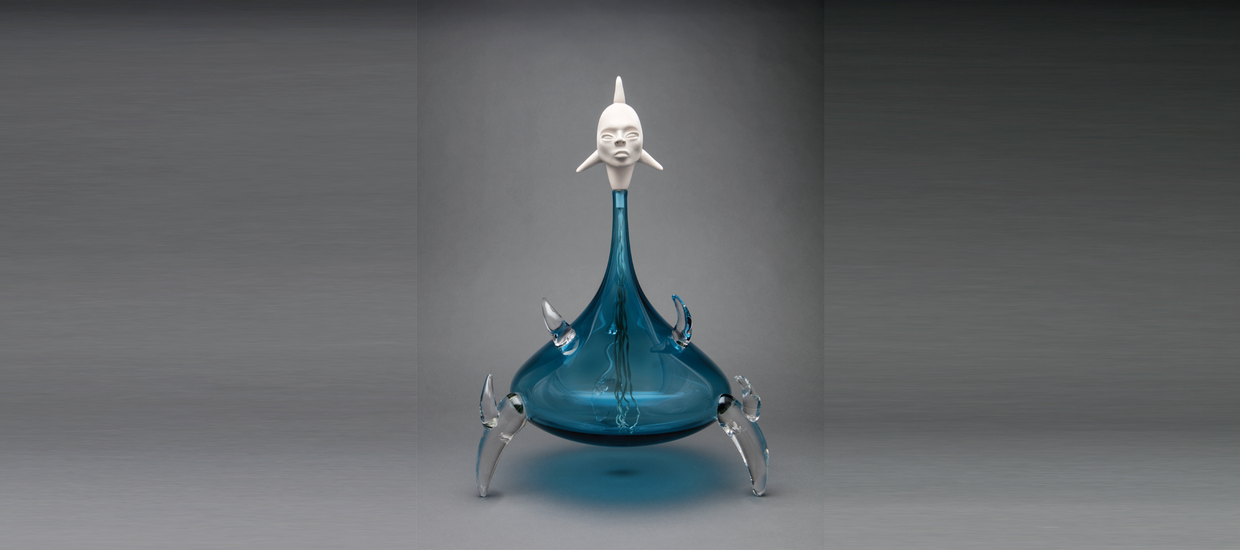Virgil Ortiz (b. 1969) embodies all that is energizing and engaging in the broad panorama of contemporary art. A visionary artist and designer as well as an enrolled member of the Cochiti Pueblo, Ortiz first trained with his mother, Serafina Ortiz (1931-2007), and grandmother, Laurencita R. Herrera (1912-1984). Celebrated artists in their own rights, these matriarchs imparted their ancestors' techniques to the younger Ortiz, who, to this day, continues to gather clay, pumice, and wild spinach leaves from his Pueblo homelands to make his painted pottery, just as generations of creators and makers before him have done.
The Pueblo Revolt of 1680 is of particular interest to Ortiz. Called "the first American revolution” by Jemez Pueblo historian Joe S. Sando, this bold uprising brought together Pueblos, Navajos, and Apaches in a coordinated strike against encroaching Spaniards, who were driven out of present-day Santa Fe by those defending their ancestral lands, their culture, their traditions, and their clay. This Indigenous victory was reversed in 1692, when the Spanish returned to resume unspeakable acts of repression, enslavement, cultural erasure, and worse, as they pursued their colonial ambitions. By revisiting this critically important, but now frequently overlooked, chapter in history, Ortiz ensures that these events are not forgotten. And by reconceptualizing the rebellion's protagonists as futuristic figures rendered using 21st-century idioms and creative tools, he poses provocative questions about the nature of history, time, and place while also inviting us to think about our roles and responsibilities, individual and collective, in shaping tomorrow.
The complexity of Ortiz's art is captured in the title of the Lowe's exhibition as slipstream refers to not only air currents produced by fast-moving bodies (generally cars, planes, or boats), but also an Indigenous conception of time and space, which rejects Western understandings of temporal linearity. This more fluid approach to lived experience has given rise to an entire genre of science fiction—Indigenous futurism—in which protagonists inhabit a realm informed by a reimagined past, a world in which their agency, authority, traditions, cultural heritage, and patrimony are fully intact. Time, space, technology, and science fiction are thus merged in a different world that, freed from the yoke of the legacies of colonialism and the strictures of normative chronometry, allows its inhabitants to freely move in and out of the wake of their ancestors, restoring and preserving the old ways while maintaining balance and harmony in a world that has been reconceptualized.
Virgil Ortiz: Slipstream features nearly three dozen works, including some of the artist's newest—and to date largest—objects: high-fire ceramic sculptures he has been creating with master artisans and craftsmen in Cuernavaca, Mexico since 2022. These monumental pieces are exhibited alongside hand-coiled, hand-painted ceramic vessels, costumes, video installations, augmented reality overlays, and photography, all of which project and retell The Pueblo Revolt of 1680 five centuries later.
Click here for virtual edition of this exhibition
Image: Virgil Ortiz, Translator 2180, 2015, Revolt 1680/2180 Series. Glass, high-fire clay finial, underglazes, acrylic paint. 18 x 27 x 18 inches. Photo credit: Addison Doty. © Virgil Ortiz
Virgil Ortiz: Slipstream was sponsored in part by the by the Miami-Dade County Department of Cultural Affairs and the Cultural Affairs Council, the Miami-Dade Mayor and Board of County Commissioners; the City of Coral Gables; the Funding Arts Network; Beaux Arts Miami; the Lowe Advisory Council; and Lowe members.





